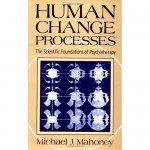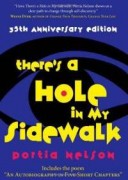Charles Steinmetz was known as the “Electrical Wizard” at General Electric during the early days of the twentieth century. On one occasion after his retirement when the other engineers at GE were utterly baffled by the breakdown of a complex machine, they asked Steinmetz if he would come back and pinpoint the problem. Steinmetz spent several minutes walking around the machine, then took a piece of chalk and made a cross mark on one particular piece of equipment. To their amazement, it turned out to be the precise location of the breakdown.
A few days later GE received a bill from Steinmetz for $10,000, a staggering sum in those days for a few moments’ work. They returned the bill to him with a request that he itemize it. He did:
Making an X $1.00
Knowing where to put it… $9,999.00
The ability to diagnose and knowing where “X marks the spot” has always been a rare and precious gift. Few things are more futile than people who try to make corrections or changes without a proper diagnosis. Knowing how to diagnose, knowing where to place the X, is rarely complicated to the one who knows the truth. For the most part, it involves a willingness to pay deep attention. The real masters of “X marks the spot” are the “Self-Diagnosers.”
History is replete with moments in which efforts at self-diagnosis – exercising powers of awareness, assuming personal responsibility, and a commitment to making corrections or changes when and where necessary – was recognized as the hallmark of maturity. People would daily examine their lives in light of an internalized standard be it the Ten Commandments, the Seven Deadly Sins, or a quote from the Readers Digest.
 Michael Mahoney, in Human Change Processes, writes that three great questions lie at the heart of every notion of psychotherapy. Can humans change? Can humans help humans change? And are some forms of help better than others? These are not just therapeutic questions; they should be the deep concerns of every parent, employer, or average Joe and Jorgena who desires to make a difference.
Michael Mahoney, in Human Change Processes, writes that three great questions lie at the heart of every notion of psychotherapy. Can humans change? Can humans help humans change? And are some forms of help better than others? These are not just therapeutic questions; they should be the deep concerns of every parent, employer, or average Joe and Jorgena who desires to make a difference.
In my daylong seminar, “Planning The Rest of Your Life,” I request people write out their eulogies. Eulogies are what people say about us after we have lived out our lives. Once written, these eulogies were to be thought of as templates – boundaries – within which people could safely conduct their lives. Once you know what you want people to say or think about you – “X marks the spot” – live out your eulogy.
The following autobiography presents as a profound diagnostic tool for self-examination. Read it aloud frequently, and acknowledge in which chapter you are presently stuck. Even though there is no cure in diagnosis, telling on your self, thus saving others the burden, still makes the top ten lists for the best gift you can give another.
 “Autobiography in Five Short Chapters”
“Autobiography in Five Short Chapters”
By Portia Nelson from There’s A Hole In My Sidewalk
Chapter I
I walk down the street. There is a deep hole in the sidewalk. I fall in. I am lost … I am helpless. It isn’t my fault. It takes me forever to find a way out.
Chapter II
I walk down the same street. There is a deep hole in the sidewalk. I pretend I don’t see it. I fall in again. I can’t believe I am in the same place. But it isn’t my fault. It still takes a long time to get out.
Chapter III
I walk down the same street. There is a deep hole in the sidewalk. I see it is there. I still fall in … it’s a habit. My eyes are open. I know where I am. It is my fault. I get out immediately.
Chapter IV
I walk down the same street. There is a deep hole in the sidewalk. I walk around it.
Chapter V
I walk down another street.
The interpersonal world in which you are presently engaged is looking for a few good people who know where to place the X. To that end, I promise to provide you with more than the chalk in each of the Therapy Story Blogs.


